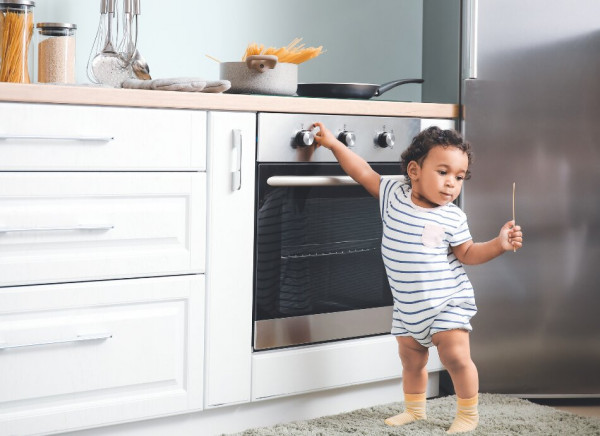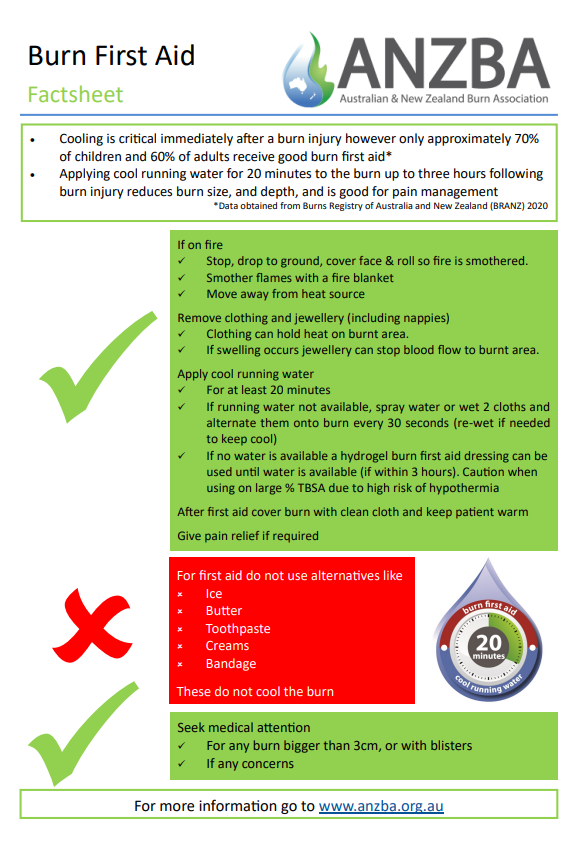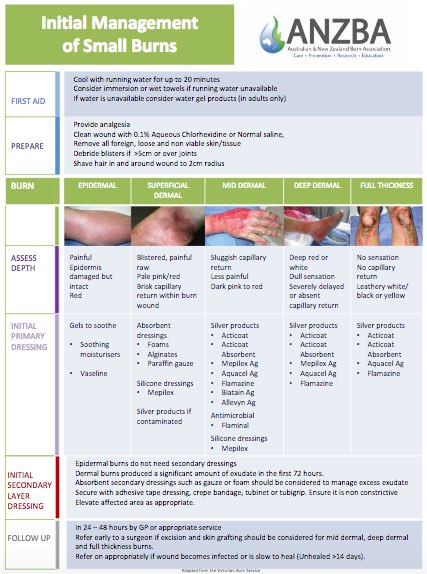Be careful with hot drinks and food
A safe temperature for hot tap water is between 50 and 55 degrees Celsius.
It can be tempting to eat and drink while holding or nursing tamariki, but these are the most common reasons for burns and scalds. Keep hot drinks and food in the middle of the table, out of reach of tamariki. Tamariki can pull tablecloths and bring hot food and drinks down with them. Use small placemats instead.
Keep kettles out of reach
Make sure you keep kettles and kettle cords where tamariki can't reach them.
Take extra care when cooking on the stove
Cook on the back elements of the stove first. Turn pot handles toward the back of the stove and block access to the stove. Never leave cooking unattended. Keep hot drinks and food away from the edge of the counter.

Image credit: Canva
Put children somewhere safe before you start cooking
Organise your tamariki with activities so that you know where they are and what they are doing before you start to cook. Put them in a playpen or in a highchair (strapped in) for a short time.
Get older children involved in cooking so you can teach them how to cook safely
Only let tamariki use the microwave when they are tall enough to reach inside safely. Remind them to always use oven gloves when taking food off the stove and out of the oven.
Avoid heating baby drinks in the microwave
Try to avoid heating babies' drinks in microwaves - if you do use them, always shake the bottle well once it's heated.
Keep an eye on young children at bath or shower time
Always supervise young tamariki at bath or shower time and when they wash their hands. Remember to always run cold water into the bath before you run the hot water. Check your child's bathwater with your wrist before letting them get in.
Make sure your water is a safe temperature
A safe temperature for hot tap water is between 50 and 55 degrees Celsius - if the water in your home seems too hot, ask a registered plumber or local energy supplier to check it and turn it down.
Check your appliances
Make sure all electrical appliances are in good working order. Don't overload power points or multi-boxes. Always turn electric blankets off before getting into bed. Make sure a qualified electrician checks your electric blankets each year.
Put hot appliances out of reach
Make sure you place hot appliances such as irons and hair straighteners out of reach after you have used them.
Put safety covers on all electrical outlets
Kids love to explore and can easily put forks or keys into wall sockets.
Install smoke alarms
You should install smoke alarms on every level and in each bedroom, living area and hallway – ideally long-life photoelectric ones. Check smoke alarms monthly and check the expiry date. For more information, see the Fire and Emergency website.(external link)
Keep matches and lighters out of children's reach
Make sure you keep matches and lighters out of reach of tamariki. Teach them to take matches or lighters to an adult straightaway if they do find them.
Take extra care with candles
Secure candles in a candleholder with a wide base and keep them away from anything that will burn easily, such as paper and curtains. Put all candles out before going to sleep or leaving a room. Never use candles in bedrooms.
Use protective firescreens
Use protective firescreens to stop your tamariki from getting too close to fireplaces. Firescreens will also prevent their clothes from accidentally catching on fire.
Apps reviewed by Healthify
You may find it useful to look at some First aid and emergency apps.









